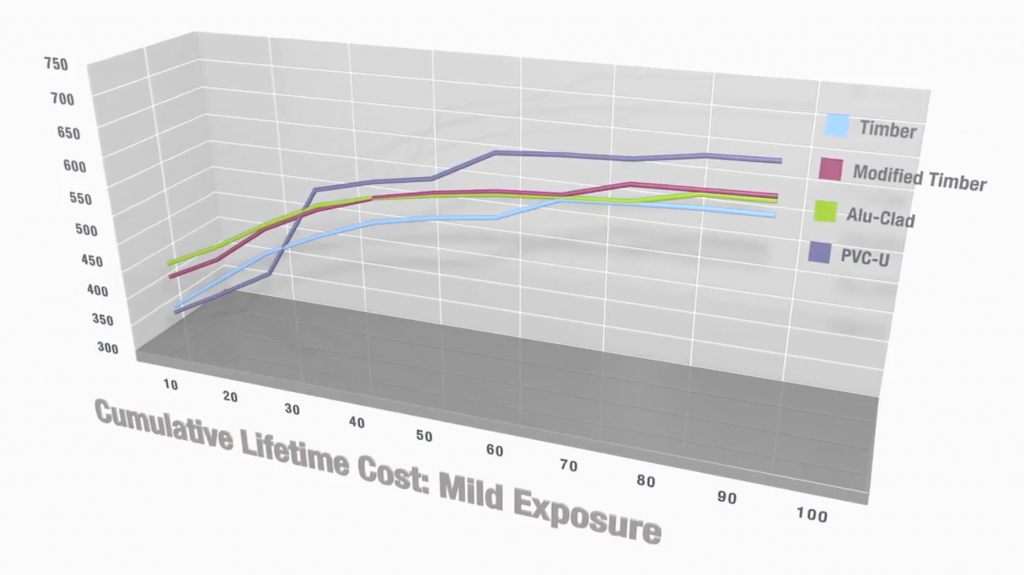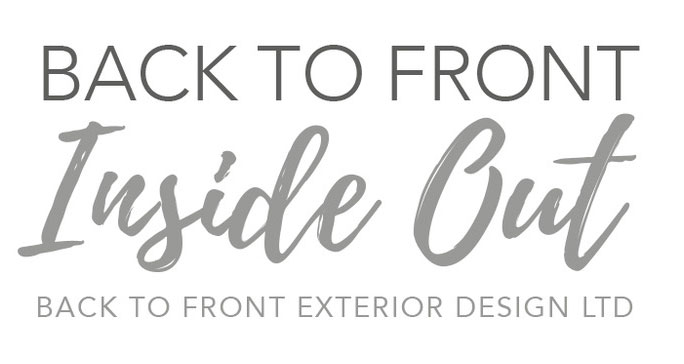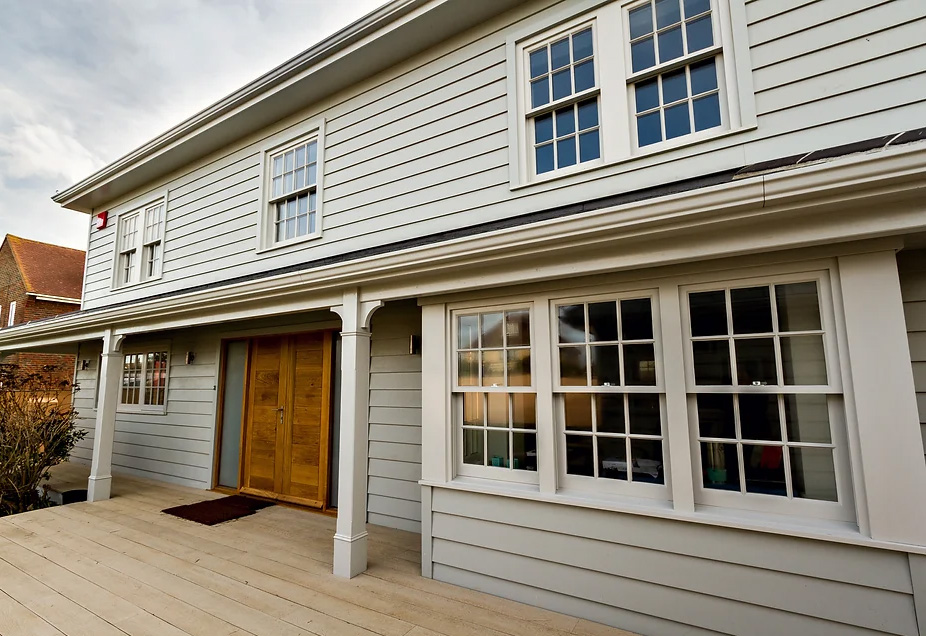At Back to Front we have believed for many years that windows and doors are the eyes of a house and can make or break a scheme. So the choice of manufacturer is vital to ensure the products look right but are also hardwearing, low maintenance, have sensible manufacturing guarantees and top eco credentials.
This is also one of the most common areas that is economised on a project, with many people opting for cheaper PVC-U, with the perceived added benefit of low maintenance. However, this comes at a significant environmental cost and in terms of real savings, can also be a false economy, not to mention potentially catastrophic for the look of the building.
So lets’ starts with PVC-U’s “low maintenance” credentials. The truth is, it’s NO maintenance. Great right? Well, let’s see. With the effects of weathering and UV, once the surface starts to break down it will stain, leaving you stuck with it. You can’t paint it to freshen it up, you can’t change the colour to suit your preference and when the sealed units fail, you will be recommended to change the whole unit as a more cost effective route, rather than changing the glass, which is a terrible waste of (not-so) natural resources. The typical turnaround for PVC-U products is 15-20 years whereas timber can last a lifetime. Yes, you will have to re-decorate them, but the typical re-decoration cycle is every 8-10 years. But if you compare that to replacing the windows every 15-20 years, painting is significantly cheaper and easier.
Most timberphobes I’ve met have scaring memories of their parents first painfully sanding and then painting timber windows with oil paint that took forever to dry (drip marks and all), a task that was no mean feat and seemed to need doing almost every year. But this is because back in the day, the window would have been bought to site “naked” or at best primed, and whilst waiting to be installed it would sit around soaking up all that great British weather we enjoy! Once fitted, the decorator would then come along and seal in all that lovely moisture with a non-penetrable oil based coating, and for the remaining life of the window that moisture wants to escape, bubbling the paint to eventually split and allow in even more moisture. A never-ending nightmare.
I am here to champion that times have changed. Technology has moved on and there are companies taking a much more scientific approach to joinery manufacturing. Most manufacturers nowadays are using Microporous paint systems (which allow the timber to breath) and deliver products to site “fully factory finished”, so we are starting the life cycle on the right foot. Microporous paint is water based and seeps into the fabric of the (soft) wood and re-decoration requires only a light sanding and is touch dry in half an hour. Not too traumatic every 8-10 years!
Relating this back to cost, a study by Heriot Watt University found that the Whole Life Cost of a typical Wood Window Alliance (WWA http://www.woodwindowalliance.com) timber window was lower over 60 years than a comparable PVC-U window. This friendly graph gets the point across quite nicely.

For the whole study follow this link: https://woodforgood.com/assets/Downloads/LCA_Report%202.pdf
So what?! You might be thinking, I’m not going to be living in the house long enough to re-coup the cost benefits.
We would implore to you to then consider the environmental impact. PVC-U is full of nasty chemicals and to quote the latest Greenpeace campaign:
“The production and disposal of PVC-U windows leads to the release of highly poisonous chemicals which threaten the environment and human health. PVC-U production involves no less than six of the fifteen most hazardous chemicals listed by European governments for priority elimination. Timber is a sustainable resource. As long as the timber is sourced from properly managed forests and care is taken in the choice of preservatives, paints and stains, timber windows are by far the best environmental choice.”
So, timber is by far the most environmental choice but for some, this is where costs savings come back to make a compelling argument to ignore these factors, no matter how serious.
So as a final argument to choosing timber, consider this last aspect. Timber will look beautiful for the duration! Whether it’s a modern or traditional look you’re going for, timber is incredibly versatile and can add thousands to the design appeal of your home, mitigating the additional outlay at the outset. Many PVC-U companies are now offerings a greater range of finishes and colours and if you are very adept at threading your way through the choices available you might get it right, but there are so many pitfalls and potential areas where it can go seriously wrong. The glazing bars can be flat and crude, direct glazing, poor proportions, chunky framing, clumsy fan lights and cheap ironmongery to name but a few. The problem gets even worse once you start looking at front doors.
So if you want to take the first step towards Back to Fronting your home, changing the windows and doors for a beautiful handmade natural product is a good place to start. Not only are you helping save the planet but you will make your house more beautiful.

